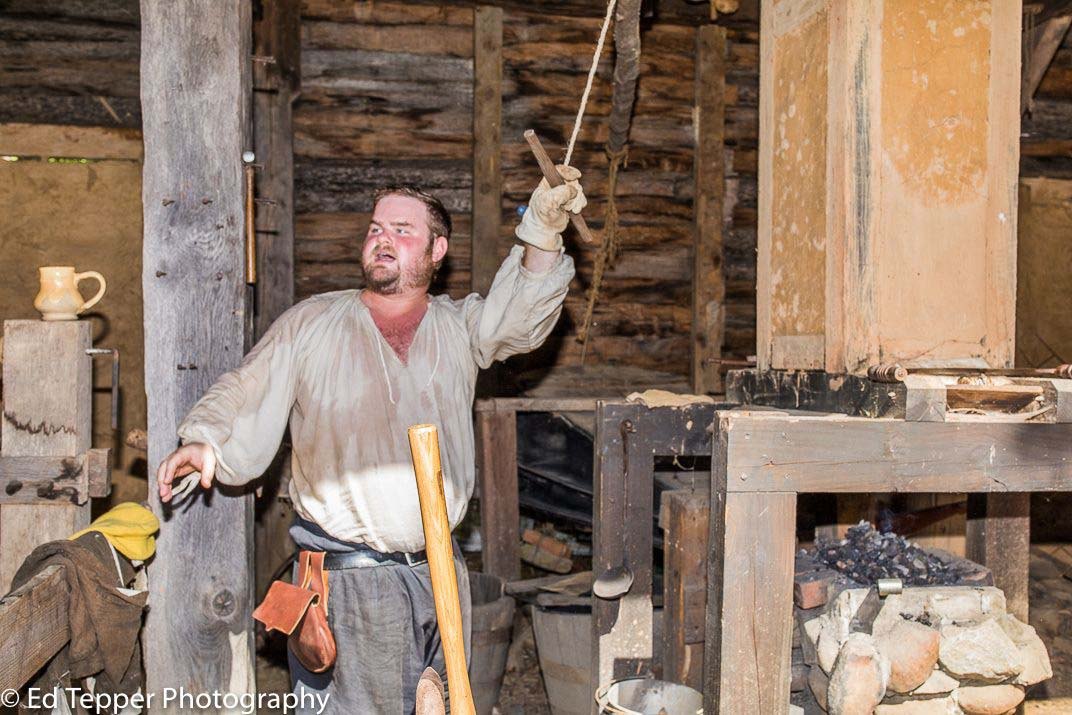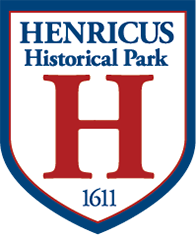A New Seat of Government
Sir Thomas Dale and approximately 300 militia in the autumn of 1611, journeyed on river and land to this vicinity; and while under attacks by Powhatan warriors, built a seven-acre fort called “Henryco Fort."
Henricus' interpreters and recreated soldiers’ cabins, watchtowers, church, blacksmith forge, and carpentry shop help demonstrate the daily life of those English colonists who struggled under martial law during the years 1611-1614.
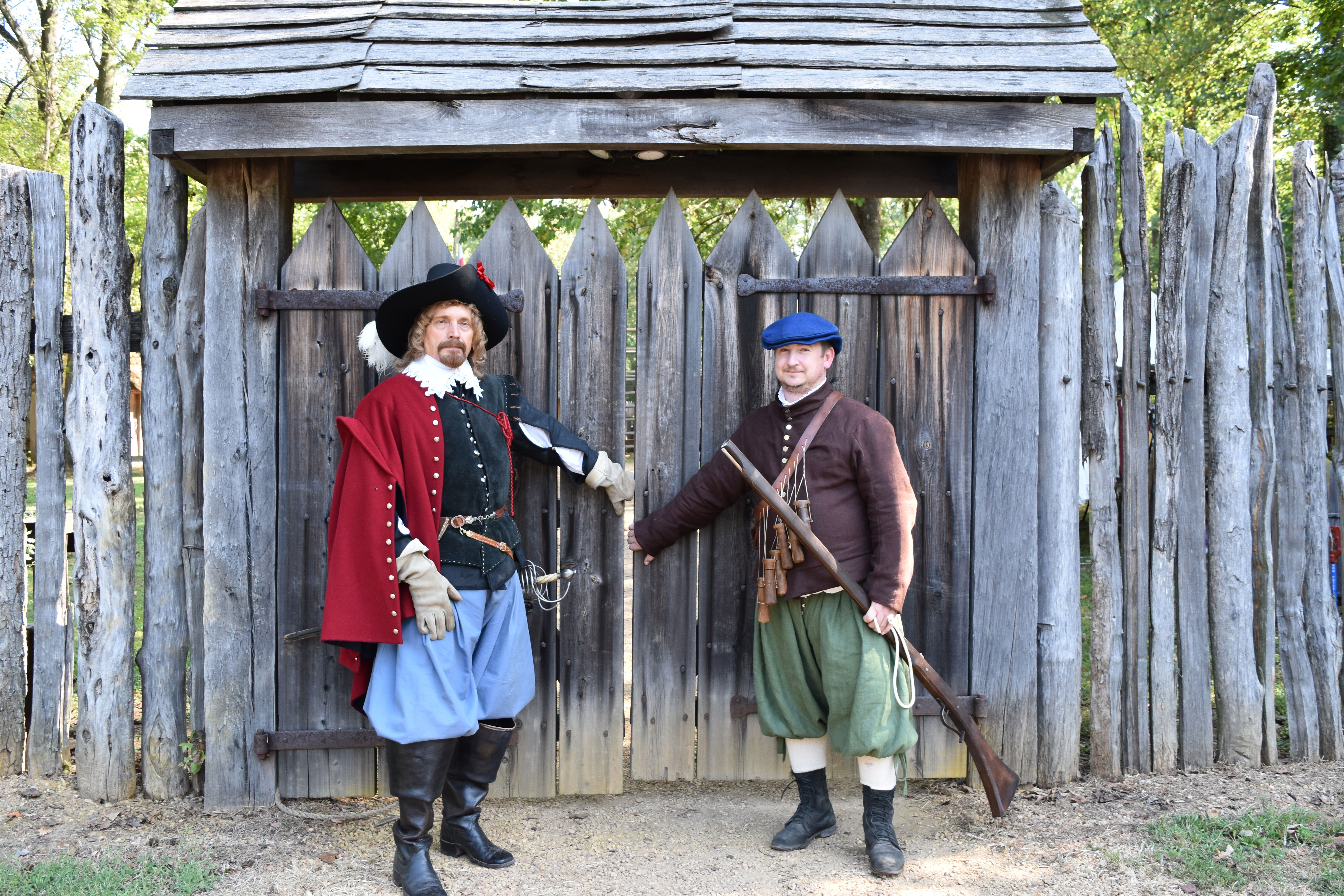
Court de Guard
Explore a day in the life of the colonist in 1611 as he served as a soldier within the palisade walls of what was once a seven-acre fort.
Henricus historical interpreters use the soldier’s house and grounds, watchtowers, earthen entrenchments, and musket firing demonstrations to illuminate the important military traditions that maintained order in this colony and protected the fledgling colony from attack.
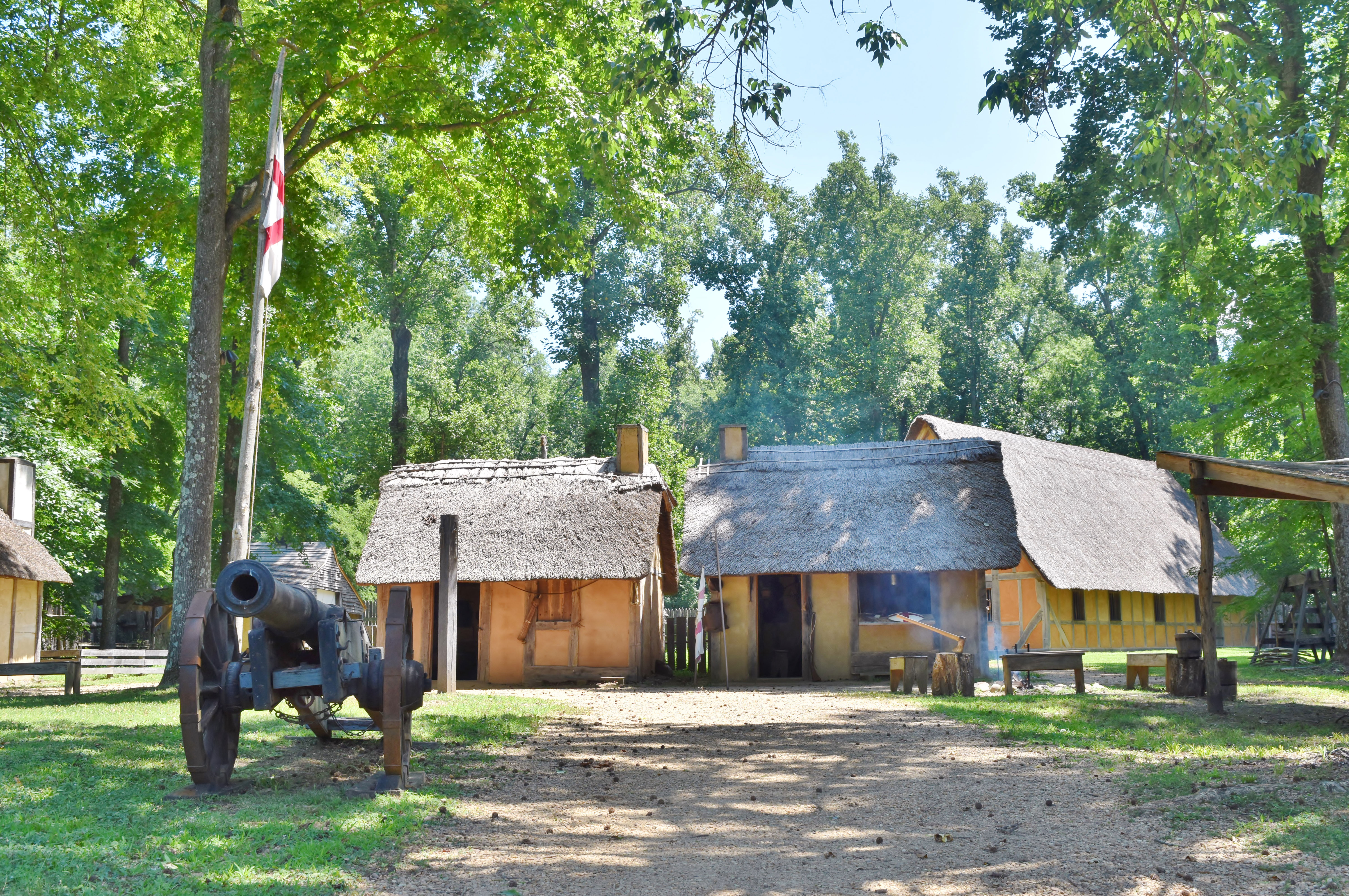
Church/Meeting Hall
The church/meeting hall was the largest building in the fort of Henricus. It could contain all citizens at the required services, which were 2 times Monday-Saturday and 3 times a day on Sunday.
Henricus' reproduction is approximately the size of the Jamestown church or half the size of the original. The church is a simple post and beam structure which would have been constructed within weeks of setting up Henricus. The minister, Reverend Alexander Whitaker, was responsible for the spiritual well-being of the settlement and is believed to have converted Pocahontas.
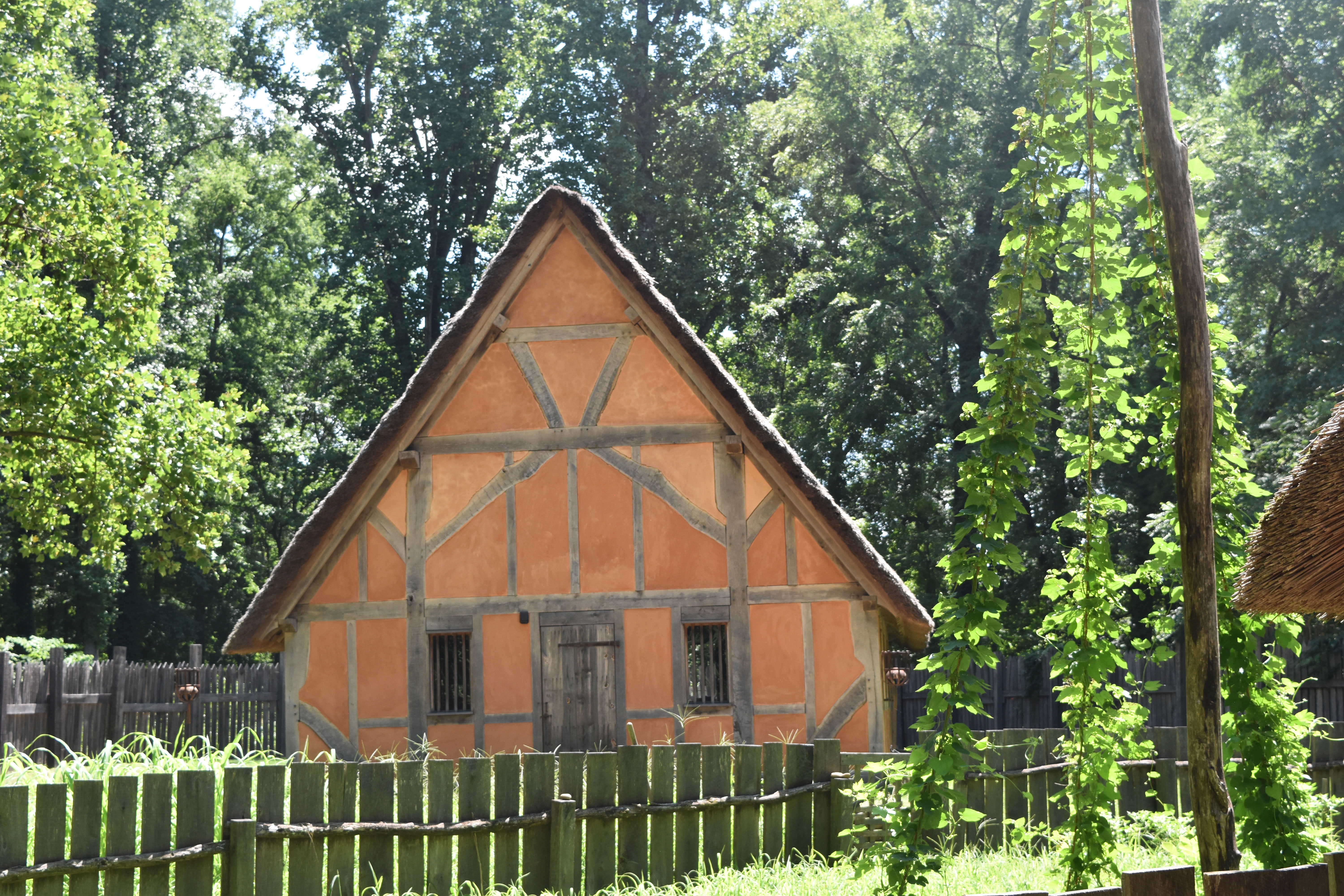
Blacksmith Forge & Tradesman Area
Just up the street from the Soldier’s House is the Blacksmith’s Forge. Tradesmen, including blacksmiths, built and sustained the settlements.
The operational forge at Henricus gives a sense of the hard work these highly skilled metal workers performed in order to supply the Citie with necessary tools, armaments and farming implements.
